Here’s a fact that’s pretty mind-blowing:
According to the latest numbers, there are over 4.3 billion (yes, a “b”) Internet users around the world, and only ~25% of those people speak English.
A WordPress translate plugin helps you reach those billions of people and make your visitors happier to boot.
Ok, you might not have a billion visitors, but the truth of it is that translating your WordPress site into different languages will help you reach a larger share of the Internet than you were reaching before, and that’s pretty valuable even if your traffic doesn’t cross the tres commas mark.
In this post, we’re going to dig deeper into the benefits of using a WordPress translate plugin. Then, we’ll show you how you can get started with a multilingual WordPress site in just a few minutes using a WordPress translate plugin and the Pukeko theme.
The Two Big Benefits to Using a WordPress Translate Plugin
To recap the intro, the two big benefits of creating a multilingual WordPress site are:
- A chance to reach more visitors.
- Happier visitors who are more likely to spend time on your site and perform key actions (like shopping at an eCommerce store).
Let’s dig into the data and principles behind those benefits…
1. Going Multilingual Helps You Reach New Visitors in Search Engines
When you browse the Internet, it’s easy to surround yourself with a bubble of your native language. This is especially true when you’re searching online because Google automatically localizes your search results, which effectively limits the Internet to your native language and location.
But here’s the important thing to remember:
There’s a whole “separate” Internet going on in different languages. People are searching Google in different languages, they’re browsing social media in different languages, and Yoast SEO is picking up different terms completely.
By using a WordPress translate plugin, you give yourself a chance to cross over into those other language bubbles. Most notably, you can start ranking for similar content queries in Google…just in a different language.
For example, let’s say you have a meditation blog written in English and you see that:
- “How to meditate” gets 5,000 searches per month.
- “Como meditar”, the same phrase in Spanish, gets 2,500 searches per month.
By using a WordPress translate plugin, you’re able to repurpose the same content and suddenly increase your potential audience by 50%! And that can be super valuable for your bottom line.
2. Offering a Multilingual Website Creates a Better Experience for Visitors
Beyond helping you reach new visitors, a WordPress translate plugin also helps you create a better experience for the people who have already made it to your site.
As you’d expect, most people prefer to browse the Internet in their native languages. In fact, according to a Gallup survey, about 90% of respondents prefer to browse a website in their own language, and 45% just plain won’t browse a website if they can’t do it in their language.
If you’re running a WooCommerce store, it’s notable that the same dynamics apply to eCommerce because 42% of those surveyed never buy products from stores in different languages.
Now, if you only target a specific geographic area – like the USA – it’s easy to think that this doesn’t apply to you because all your visitors speak your native language.
But you’d be surprised at the language differences, even in small geographic areas…
For example, the US Census Bureau estimates that 21.6% of people age 5+ in the USA speak a language other than English at home, and that number jumps to 44.6% when you look at California alone.
So even if you’re just targeting a single country or state, there’s still a good chance you have a multilingual audience.
How can you tell for sure? A good starting point is the Geo → Language report in Google Analytics, which will give you an idea of the preferred languages of your site’s visitors:
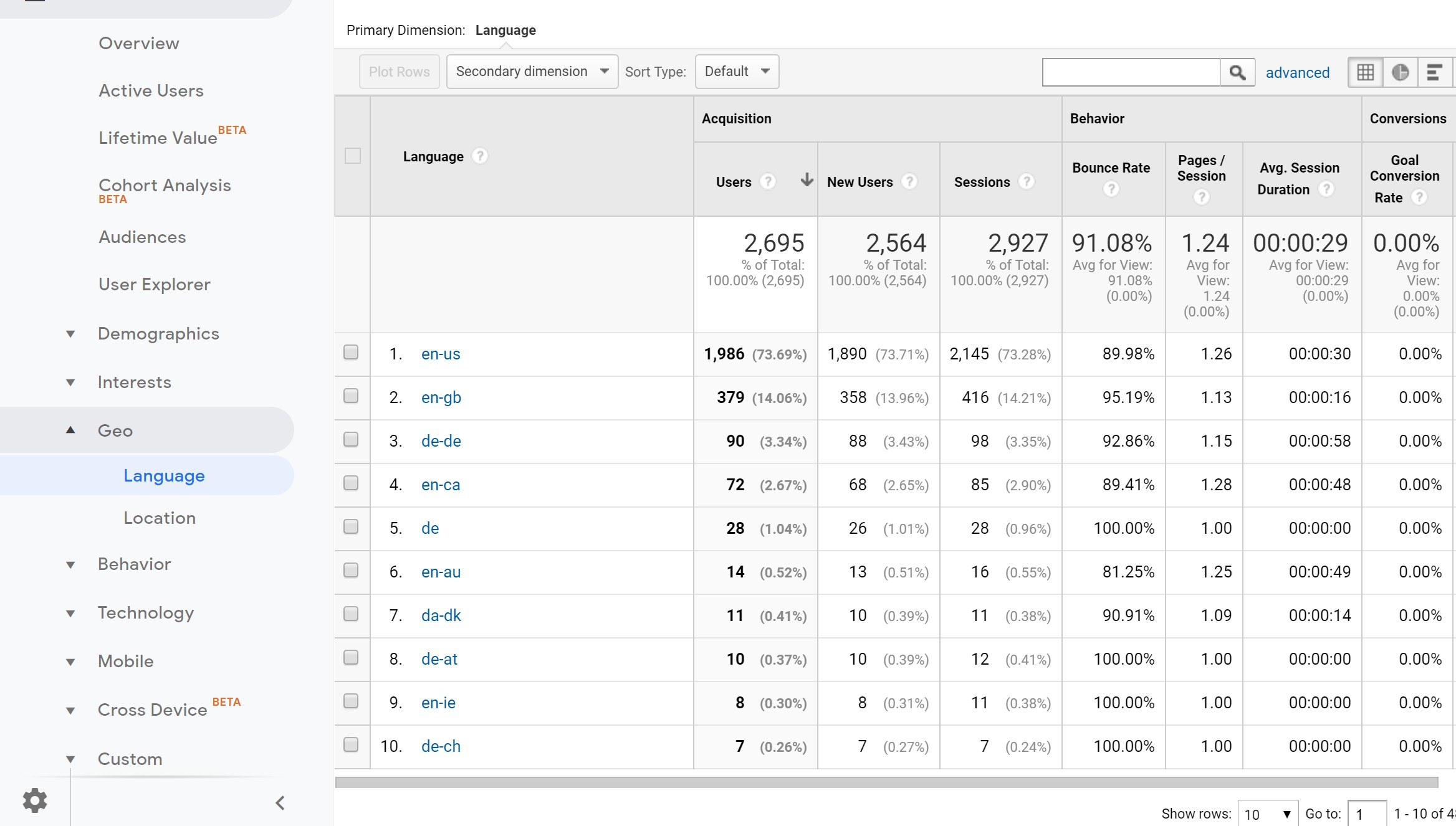
How to Use a WordPress Translate Plugin to Go Multilingual
By this point, you know the benefit of using a WordPress translate plugin to translate your site into different languages.
Now for the actionable part – how do you actually do that?
To point you in the right direction, let’s run through a quick tutorial using the Weglot WordPress translate plugin.
This multilingual plugin will help you create a user-and-SEO-friendly multilingual site using an automatic translation. Then, you can go back and manually refine your translations or outsource them to professional translation services.
Here’s a quick look at how it works…
Step 1: Set Up the Basics
To get started, you can install the free Weglot WordPress translate plugin from WordPress.org
Then, you’ll need to sign up for the Weglot service and add the API key from the Weglot dashboard to the plugin’s settings in your WordPress dashboard.
From there, you can choose your site’s current language and the language(s) into which you want to translate your site. For example, if your site is in English and you want to translate it into German, all you need to do is set it up like this:
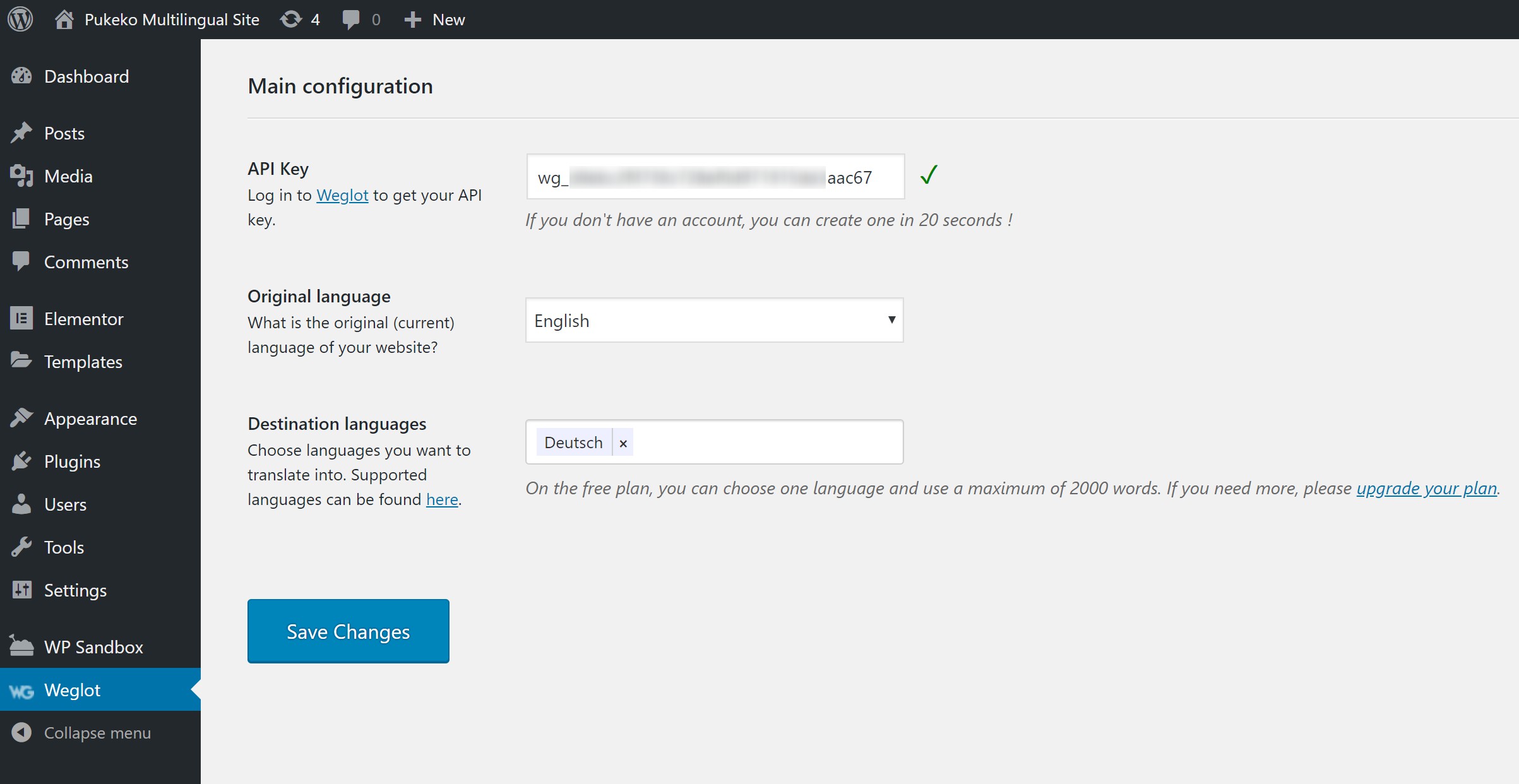
Then, as soon as you click Save Changes, Weglot uses automatic machine translation to translate your entire site, and also adds a front-end language switcher so that your visitors can switch between languages.
Step 2: Manually Manage and Refine Translations
While the automatic translation gives you a good foundation, most people know that, as Google Translate proves on a daily basis, machine translation isn’t perfect.
So, you’ll probably want to go in and manually refine your translations, especially for key pages.
To do this, the Weglot WordPress translate plugin gives you two different interfaces.
First, you can use a side-by-side Translations interface like below. All you need to do is click and type to edit a translation, and Weglot will mark which translations you’ve already reviewed. Or, you can also outsource translations to professional translation services:
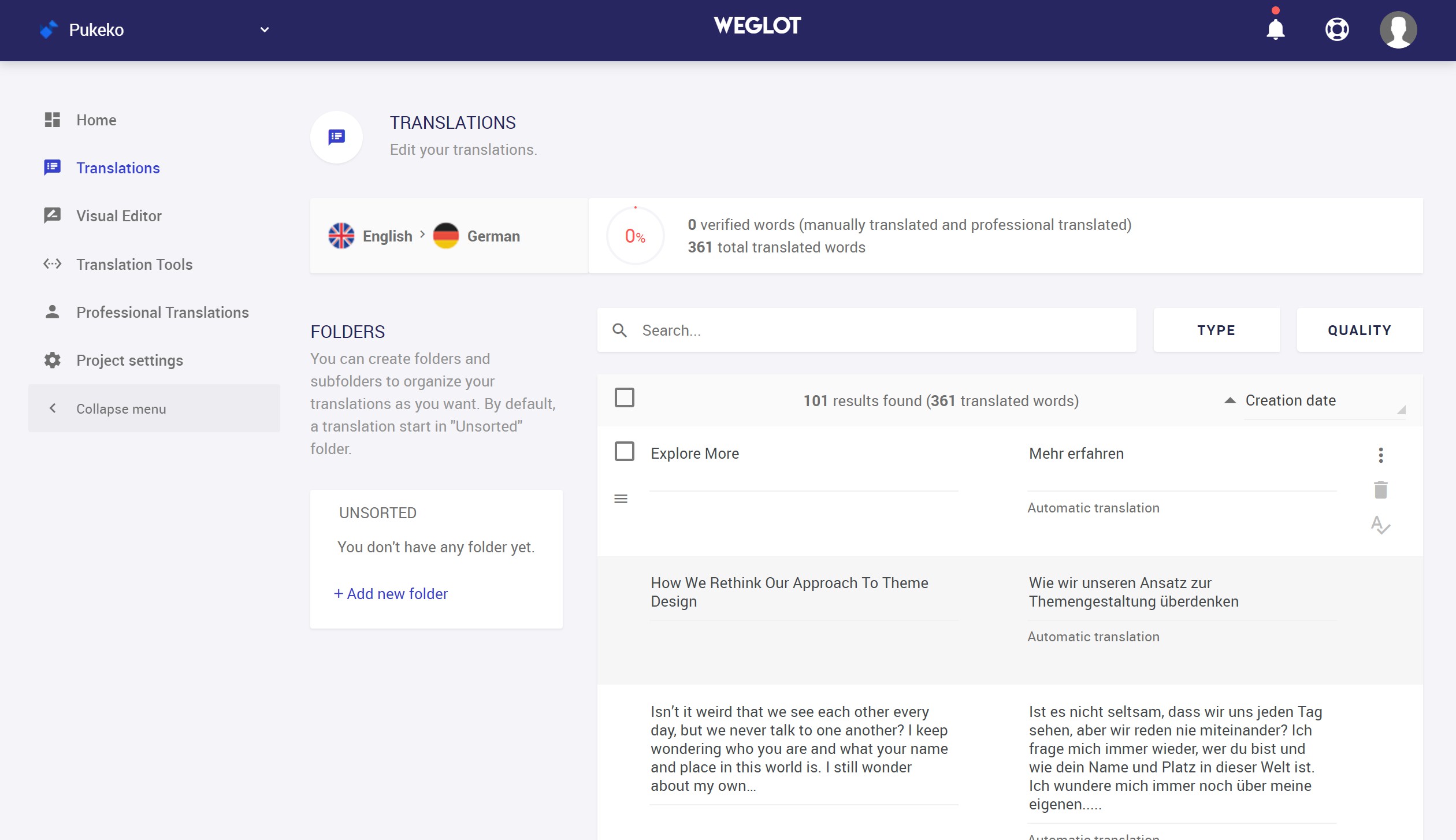
Or, if you’d prefer a more visual approach, you can use the Visual Editor, which gives you a look at your front-end site. To edit a translation, all you do is hover over the text you want to translate and click the green pencil icon:
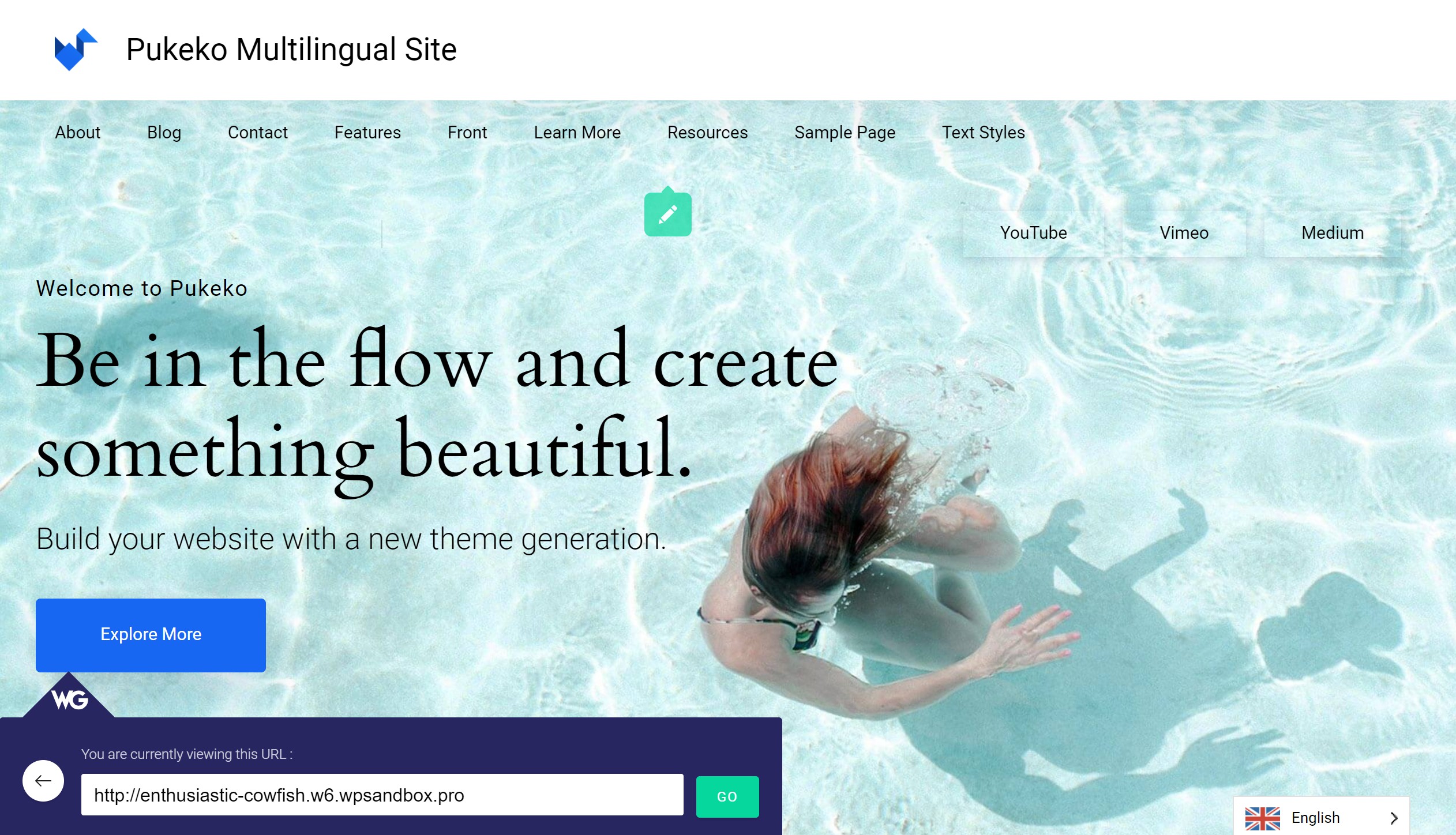
And that’s all there is to it! While there are a lot of WordPress translation plugins out there, Weglot offers one of the simplest ways to translate your WordPress site into a different language.
Start Using a WordPress Translate Plugin Today!
The Internet is a multilingual space, and a WordPress translate plugin helps you address that fact to:
Reach more visitors in search engines like Google by ranking your existing content in new languages.
Offer a better experience to your visitors by letting them browse your website in their native languages, which is what the vast majority of visitors prefer.
There are a lot of great WordPress plugins for translation, but the Weglot WordPress translate plugin offers a good starting point that can help you quickly get up and running with a multilingual WordPress site powered by machine translation, and refined with manual translation or professional translation services.
Go multilingual today and start reaching a bigger chunk of the Internet!
Icons made by Freepik from www.flaticon.com




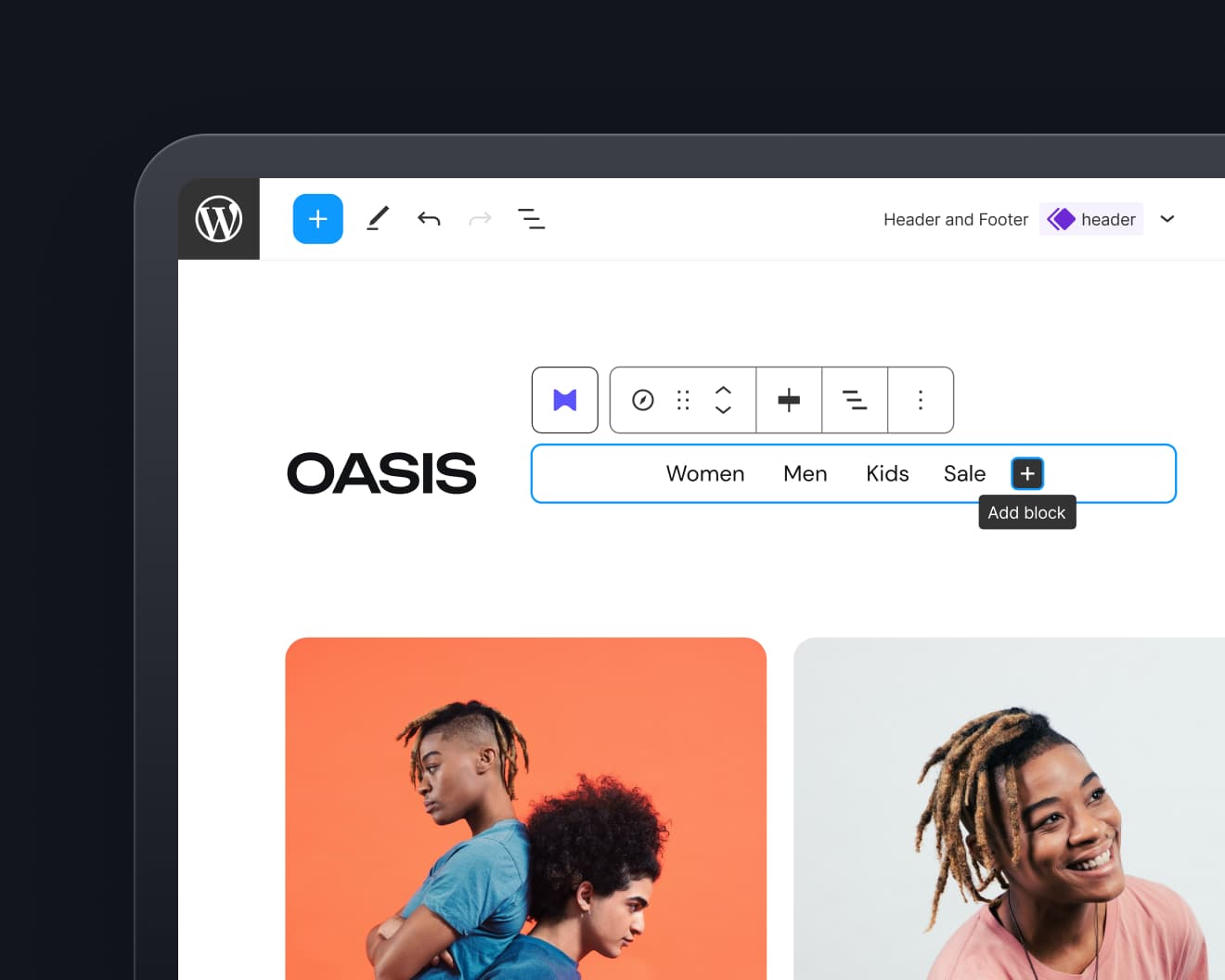
Leave a Reply